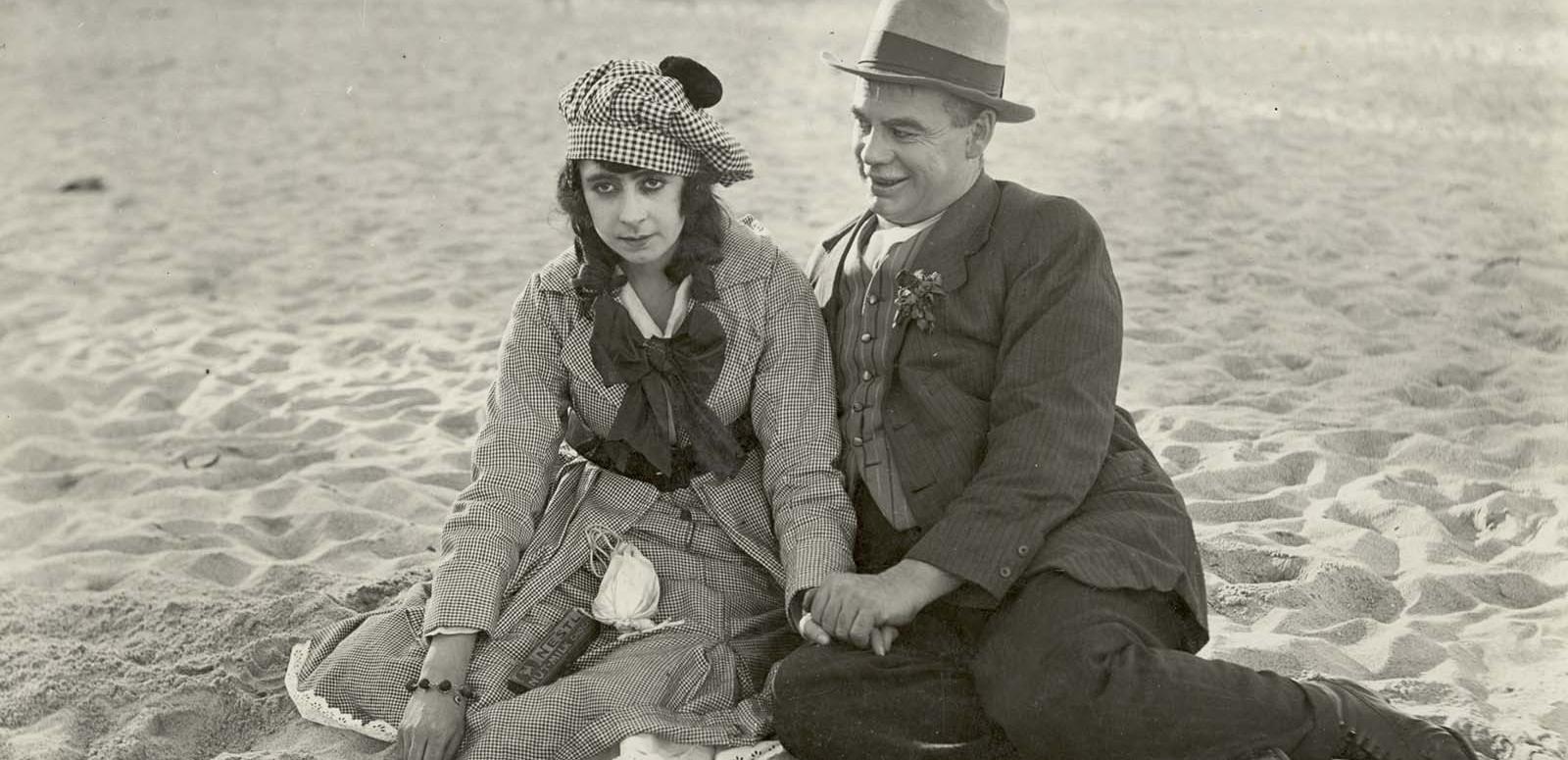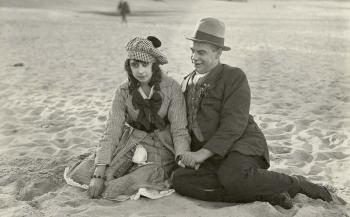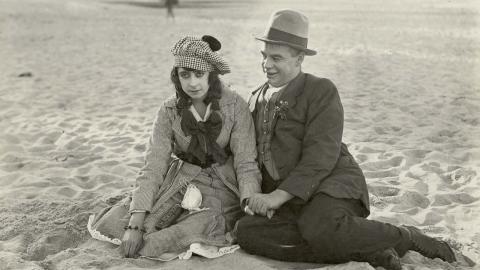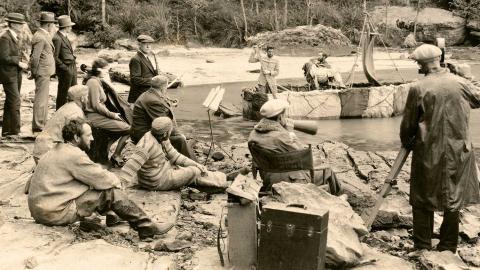

100 Years of The Sentimental Bloke
Reinventing the Bloke

A few years ago, Phil Butters conducted a substantial amount of research at the NFSA for his book An Unsentimental Bloke: The Life and Work of CJ Dennis. In August 2015, Phil won the National Biography Prize for his book.
To celebrate this achievement and mark the centenary of the publication of The Sentimental Bloke on 9 October, I spoke with Phil about the different facets of the Bloke preserved in the NFSA collection.
Jenny Gall: Can you talk about what you were hoping to find at the NFSA that might provide an insight into the life of CJ Dennis?
Phil Butters: When I began working on the biography, I was hoping that Frank Thring’s 1932 talkie, The Sentimental Bloke, had survived. Sure enough, the NFSA was able to send me a copy on video and that meant I could work through it slowly. It might not be a great film, but it was an important moment in Dennis’s later career, and it was important in Australian film history.
Videos of the silent classic version of The Sentimental Bloke from 1919, directed by Raymond Longford, were already available from the NSFA, but while I was working on the book, the restored version was released on DVD. The accompanying booklet brought together a lot of useful information, and the restored print was of much higher quality. Also, it showed the original tinting—pink for the love scenes, for example — which was fascinating.
Was there other any material that was useful in the process of writing An Unsentimental Bloke?
Yes, there was some unexpected gold in the NSFA holdings. I had no idea that any film scripts that Dennis had written might still be extant. It was wonderful to find a script for a film version of The Sentimental Bloke that he had written in the first half of 1915, before his book had been released and before anyone had any idea how successful it was going to be. Raymond Longford doesn’t seem to have used Dennis’s script in making his 1919 version. There is also a script that Dennis wrote in the mid-1920s for a version of his last larrikin book, Rose of Spadgers, but no film company took it up.
Also very useful were some unexpected papers related to Dennis’s life-recollections about him written by his wife in her old age. She had earlier published a memoir about him, but in these later, more private, writings, she was prepared to be much more open. There are some very revealing comments about what Dennis was like.
What are your thoughts about the adaptation of the verse novel into the two film versions?

Longford’s 1919 version of The Sentimental Bloke is rightly regarded as Australia’s contribution to the classics of silent cinema. It’s a very good retelling of Dennis’s original. Although Longford remains pretty faithful to Dennis’s book, he is actually able to improve on it in some ways. For example, he is able to make Doreen a stronger figure, by showing her decisive gestures and facial expressions. It’s interesting, too, to see Longford making some visual jokes in keeping with the mood of Dennis’s work. For instance, there’s a moment when the Bloke stares into a cut pumpkin and the audience is made aware of his thoughts when a shot of his beloved’s face is superimposed onto the pulpy flesh and seeds. It’s a nice example of 1919 special effects, as well as of Longford’s sense of humour.
The 1932 talkie, directed by Frank Thring, bears all the hallmarks of the film industry’s difficult transition to sound. In the NSFA’s collection there are production stills from both the 1919 version and the 1932 version. The cinematographer in each case is Arthur Higgins. He has lost a bit of hair, but the real difference in the photos is that the camera is so much more bulky for the talkie. That was necessary to damp the whirring sound of the shutter. In addition to the heavy photographic equipment, the limitations of the early recording equipment meant that the actors’ movements were constricted and they had to project their voices as if playing to a theatre audience. It may be that those technical limitations were the reason that Dennis and Thring chose to adapt the play version of The Sentimental Bloke from the early 1920s rather than directly working with Dennis’s original book. All in all, it’s a pretty clunky piece of film — interesting as one of Australia’s first big sound films, but, as Ken Hall said, ‘a pale shadow’ of Longford’s version.
Is there a place for a new film version of the Bloke?
That’s a hard question. The fundamental issue in Dennis’s book is still relevant — the transition from an irresponsible, risk-taking, free young man into a good husband and father. But the larrikin slang of Dennis’s Bloke is too hard for most people to follow today. It’s also true that tough blokes are out of favour with a sizable section of contemporary Australian culture. And Dennis’s exaggerated version of Australian identity doesn’t have as much appeal as it once did for those who want to see Australia as multicultural or cosmopolitan or sophisticated.
The collection holds a script for another The Sentimental Bloke, written by Bob Ellis and Maurice Murphy in 1982, from a then contemporary left-wing perspective. It never went into production, though there could be a lot of different reasons for that. I guess it would be possible to come up with a new film version of the Bloke, but there would have to be quite a lot of changes for it to work for a broad audience today.
An Unsentimental Bloke: The Life and Work of CJ Dennis is available from Wakefield Press.
The National Film and Sound Archive of Australia acknowledges Australia’s Aboriginal and Torres Strait Islander peoples as the Traditional Custodians of the land on which we work and live and gives respect to their Elders both past and present.


